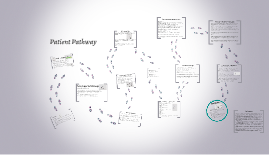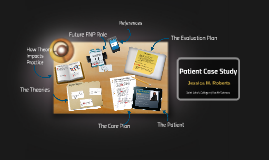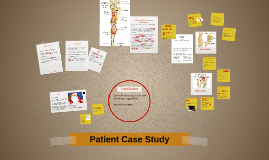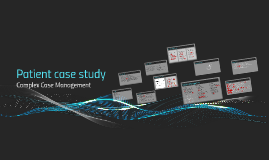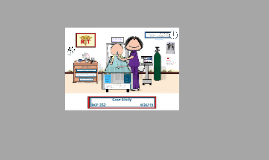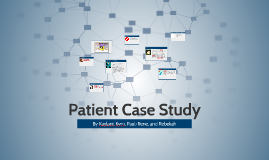Patient case study
Transcript: Functional gains Social treatment plans Exposure Costa coffee Continuation of treatment onto the wards Ensure patients communicate can develop (Happ Et al 2011) Test for cognitive/psychological changes (Pandharipande Et al 2013) Offering time to test ADLS as able Relied on mature problem solving skills and interpersonal techniques Complications Difficult members of staff who made treatment sessions stressful and caused conflict (Daniel & Rosenstein 2008) Had to rely heavily on clinical reasoning and decision making and sought out regular feedback on treatments Reflection (Donaghy & Morss 2000) Long term Expectation/prognosis management Increased anxiety and depression Risk of post traumatic stress disorder and Post ICU depression (NICE 2009) Multiple cardiac events Phase 2 Psychological Biological Complex Case Management Introduce the patient and their situation Show the initial assessment that took place Look into the patho-physiology and psychosocial conditions Goals for treatment and a prioritized problem list A treatment plan and a holistic management scheme Evaluation of complications Long term Long term goals wean from all ventilation and oxygen Increase mobility and functional gains Manage psychosocial implications Provide long term treatment plan for muscle mass Engage in long term support with follow ups and referrals Problem List Respiratory compromise Multiple organ failure Reduced mobility and function Extreme fatigue Communication issues BASSETT, Sandra F. and PETRIE, Keith J. (1999). The Effect of Treatment Goals on Patient Compliance with Physiotherapy Exercise Programmes Physiotherapy, 85 (3), 130 <last_page> 137. BAUER, Michael, et al. (2009). Hospital discharge planning for frail older people and their family. Are we delivering best practice? A review of the evidence Journal of clinical nursing, 18 (18), 2539 <last_page> 2546. BERNEY, Susan and DENEHY, Linda (2002; 2006). A comparison of the effects of manual and ventilator hyperinflation on static lung compliance and sputum production in intubated and ventilated intensive care patients Physiotherapy research international, 7 (2), 100 <last_page> 108. BHOWMIK, A., et al. (2009). Improving mucociliary clearance in chronic obstructive pulmonary disease Respiratory medicine, 103 (4), 496-502. CAMPBELL, c. (2011). Deconditioning : the consequence of Deconditioning : the consequence of bed rest. Geriatric Research Education Clinical Center. Clinical guideline - cg83-critical-illness-rehabilitation-guideline2 [online]. http://www.nice.org.uk/guidance/cg83/evidence/cg83-critical-illness-rehabilitation-guideline2. DAVIS, C. (2015). Pleural Effusion. [online]. http://www.medicinenet.com/pleural_effusion_fluid_in_the_chest_or_on_lung/article.htm#pleural_effusion_definition. DAVYDOW, D. S., et al. (2009). Depression in general intensive care unit survivors: a systematic review Intensive care medicine, 35 (5), 796-809. DE LA CERDA, G. (2013). Implementation of an ICU follow-up clinic: outcomes and patient satisfaction after 1 year Critical care, 17 (Suppl 2), P538. DENEHY, L. and BERNEY, S. (2001). The use of positive pressure devices by physiotherapists The european respiratory journal, 17 (4), 821-829. DONAGHY, Marie E. and MORSS, Kate (2000). Guided reflection: A framework to facilitate and assess reflective practice within the discipline of physiotherapy Physiotherapy theory and practice, 16 (1), 3 <last_page> 14. ENGEL, G. L. (1981). The Clinical Application of the Biopsychosocial Model Journal of medicine and philosophy, 6 (2), 101 <last_page> 124. GRIES, C. J., et al. (2010). Predictors of symptoms of posttraumatic stress and depression in family members after patient death in the ICU Chest, 137 (2), 280-287. HADJILIADIS, D. (2014). Pleural effusion. [online]. http://www.nlm.nih.gov/medlineplus/ency/article/000086.htm. HAPP, M. B., et al. (2011). Nurse-patient communication interactions in the intensive care unit American journal of critical care : An official publication, american association of critical-care nurses, 20 (2), e28-40. KNOWLES, R. E. and TARRIER, N. (2009). Evaluation of the effect of prospective patient diaries on emotional well-being in intensive care unit survivors: a randomized controlled trial Critical care medicine, 37 (1), 184-191. KRESS, J. P. (2009). Clinical trials of early mobilization of critically ill patients Critical care medicine, 37 (10 Suppl), S442-7. LAISAAR, T. (2006). Life expectancy of patients with malignant pleural effusion treated with video-assisted thoracoscopic talc pleurodesis Interactive CardioVascular and thoracic surgery, 5 (3), 307 <last_page> 310. LANNEFORS, L. and WOLLMER, P. (1992). Mucus clearance with three chest physiotherapy regimes in cystic fibrosis: a comparison between postural drainage, PEP and physical exercise The european respiratory journal, 5 (6), 748-753. MYHREN, H., et al. (2010). Posttraumatic stress, anxiety and depression symptoms in patients during the first year post






